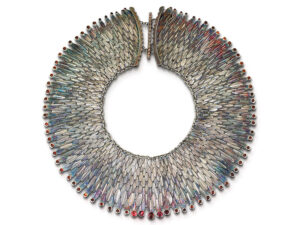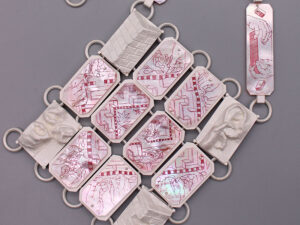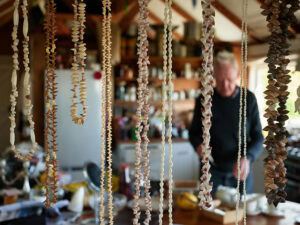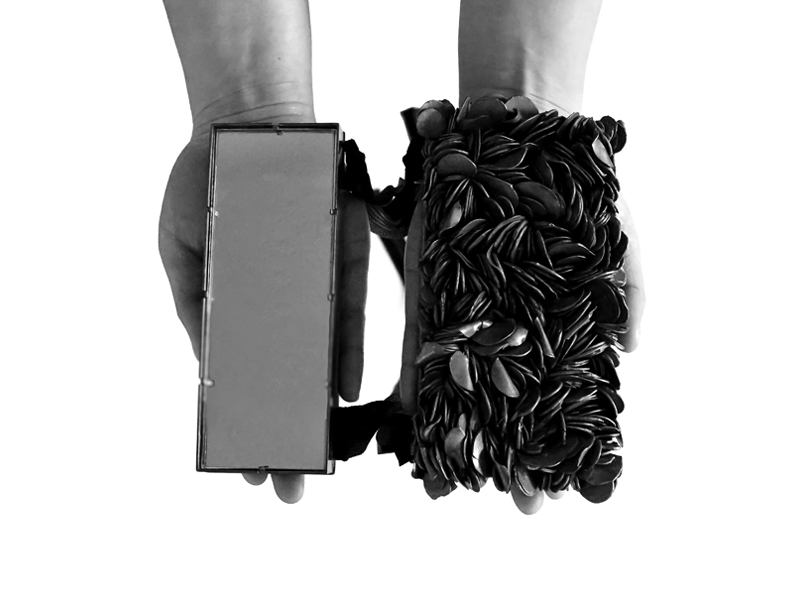
Tracy Steepy and Lori Talcott have been working and teaching together since they met serendipitously in 2008. This is their first exhibition together at Platina. Sandra Wilson caught up with them to find out more about the thinking behind the show and their approach to making and teaching.
Sandra Wilson: What does having an exhibition together give you that working on a solo show doesn’t?
Lori Talcott: Preparing for this exhibition was really just a continuation of the ongoing discussions we have about our work and process, as well as ideas around jewelry in general. Over the years, we have had regular studio visits where we help each other develop and move through ideas. These discussions shift seamlessly between our teaching and studio practices. There is often no clear division or distinction between the two, as each informs and is intertwined with the other. The professional and personal relationship we have established allows for us to be supportive in a critical way, and we often see things in the other’s work that we ourselves might overlook.
Tracy Steepy: After the installation, we also had the opportunity to discuss ideas across the work. Seeing the work together in the gallery for the first time allowed for a discussion not of similarities or contrasts, but of the third conversation that the work created. This was the most generative aspect of having an exhibition together. The cross-pollination of ideas, anchored by a shared theme, could not occur within a solo context.
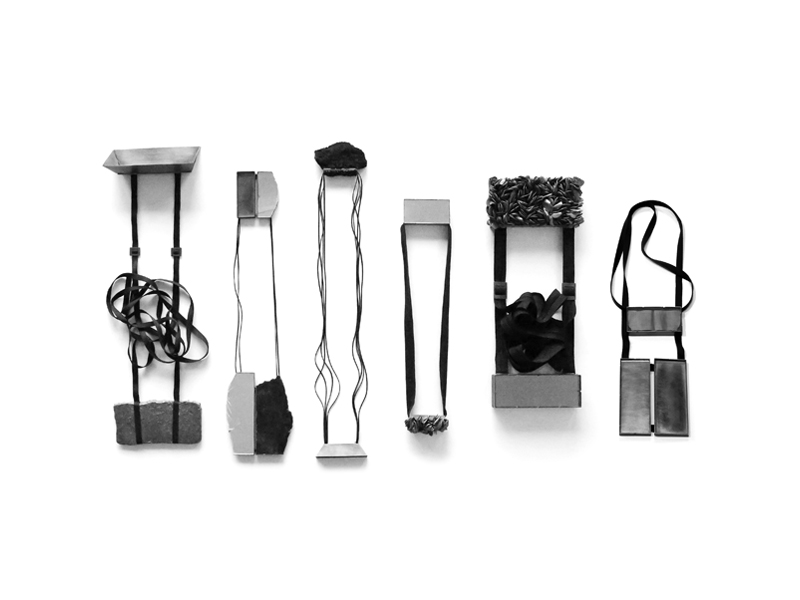
How did you come up with the name for the show?
Lori Talcott: I had been working with medieval ideas in regards to the human heart, and how it was conceptualized as a book—where our thoughts and memories were inscribed. This idea led naturally to the format of the diptych. Because Tracy and I were both working with jewelry—in her case, brooches, and in my case, primarily neckpieces—essentially made in two parts, we decided on the diptych as our overarching theme.
Tracy Steepy: Both of us were thinking about the relationship between interior and exterior—the body holding the place between, metaphorically as well as literally, in the wearing of the work. Color was also a commonality as both of us were working in a palette of grays and blacks. I had been using gray as a reference to the liminal. Gray is the color of the in-between, never pure in and of itself, and always in service to another color. To include this as part of the title only seemed to strengthen the notion of the diptych.
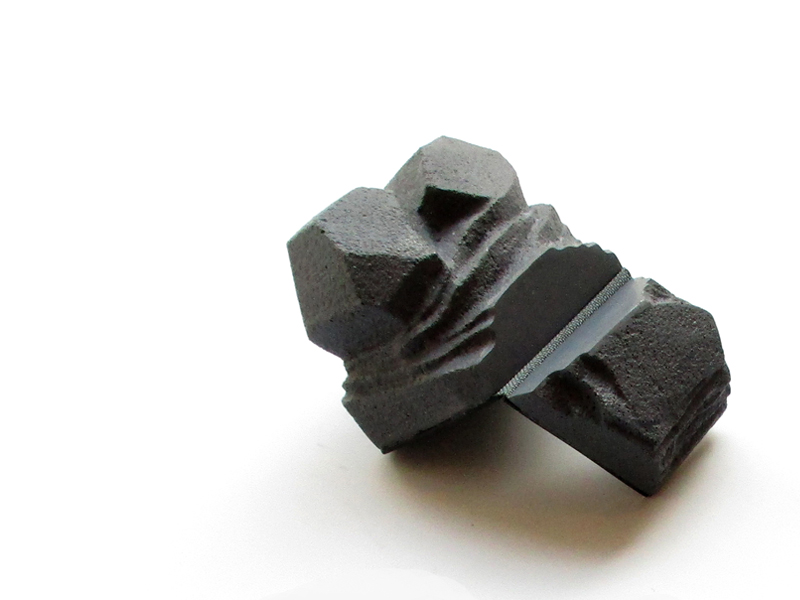
You talk about how the diptych creates effectively a liminal space—does this notion also have a place in education? And if so—how do you create it?
Tracy Steepy and Lori Talcott: Absolutely. Graduate school is a liminal space—in the classic, anthropological sense. It is the middle phase of a rite of passage, the place of transformation. One doesn’t have to create it, as it inherently is that. And we acknowledge this space that we are working in and try to be protective of for our students, as it is a formative and vulnerable time.

What kind of art jewelry educational experience did you both have, and how would you characterize it?
Lori Talcott: I grew up in a family of jewelers and makers, which was the foundation for all the formal education that followed. As an undergraduate I first studied art history, then returned to the University of Washington, where I acquired a solid and diverse skill set, which gave me the confidence to develop and follow through with my ideas as an artist, as well as to pursue the commission work that has primarily supported me. During this time I also worked as an assistant for several important jewelry artists, and it was through this experience that I really learned about both contemporary jewelry and ethnographic jewelry, and how relevant the latter is in contemporary thinking and making.
Tracy Steepy: Lori and I came from similar undergraduate experiences in regards to an emphasis on classic metalsmithing skills. Both departments were part of the post-war Handy and Harmon workshop legacy that promoted traditional silversmithing. We both benefited from this legacy in these programs that valued and fostered craftsmanship and skills. Our graduate experiences, however, were quite different, as Lori went on to do a traditional apprenticeship in Norway. She did her graduate work some years later, in a visual arts program. After my undergraduate work at Indiana University, I went on to SUNY New Paltz for my graduate studies. This program provided the strong and rigorous critical discourse that I was hungry for. It was a very intense program that I was grateful to be a part of, as I left with a rich pool of colleagues—the majority of whom have gone on to be active practitioners and educators, committed to expanding the dialogue within our field.
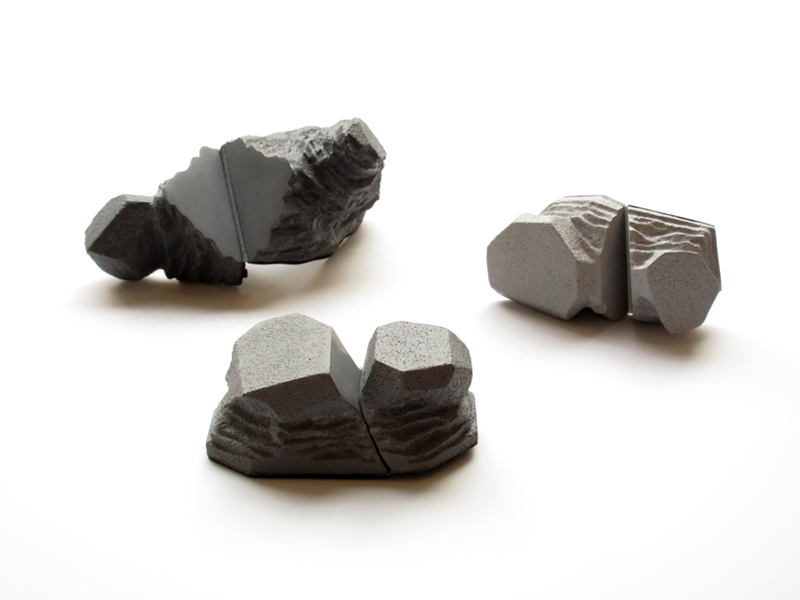
You both have a strong awareness of the history of jewelry making and its universal themes, such as traditional techniques and ritual, etc. How does this inform your current practice?
Lori Talcott: Historical references definitely inform and are always present in my work, but these are less about styles of jewelry and more about concepts related to jewelry. As for “traditional techniques,” there are techniques that unite those making jewelry and various kinds of adornment across the world and through time: the carving of organic materials; casting, fabrication, and forming; and surface embellishments such as repoussé, chasing, and engraving. But there is a great deal of jewelry that does not rely on traditional metalsmithing techniques—textile techniques and beading, for example. Both of us use a spectrum of techniques, depending on what the work needs—what the concept requires. And sometimes the technique is the concept. In regards to ritual, jewelry has long been an integral part of ritual processes. Along with performative speech and gestures, objects such as jewelry act as agents that strengthen the efficacy of a ritual—making the invisible visible, so to say. Wedding rings and royal crowns are obvious examples, but there are many, more nuanced examples of the role ritual plays in everyday life and how jewelry helps us to navigate and mediate these spaces. Ritual is central to both how I approach my studio practice as well as my intention for the work when it goes out into the world. Besides what jewelry is meaning, I am interested in what jewelry is doing—as a ritual, emotional, and performative object.
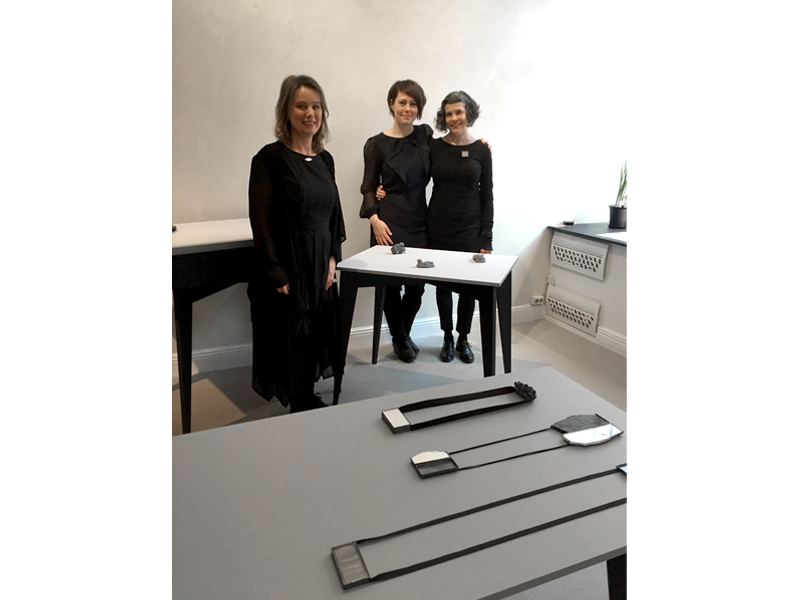
Teaching pedagogy has changed a lot recently—how would you describe your own personal teaching philosophies?
Lori Talcott: I am definitely of the mind that one is mentoring just as much as teaching. It’s really about walking alongside the student and supporting them—in a critical way. I encourage students to develop a sense of mastery around their ideas and how they manifest these ideas. I’m not talking about technical virtuosity, although it could include this. I mean a depth of thought, about a seriousness and intention in the thinking about and making of the work—one that persuades the viewer, through visual rhetoric, to trust the artist to take them to the heart of their concept. When we first discussed the structure and content of seminar, the primary objective was to present theory and practice as fully integrated, as opposed to theory occupying some estranged realm with no relevance to the students’ studio practices. We believe that theory and practice should inform one another—and this integration is where artists and practitioners have a great deal to offer scholarly discourse.
Tracy Steepy: Parallel to Lori’s comments, I am interested in dismantling the hierarchies that might exist with my students between the thinking of the work and the making of the work. Students usually refer to working either formally (design-centric = no idea) or conceptually (art-centric = big ideas). I consider these notions and distinctions to be outdated and unproductive. Anything, if given the proper attention, can be pursued as an idea. There has to be a balance of supporting students to tenaciously follow their sincere interests and recognize their natural proclivities, while also honing self-reflection and self-critical skills. Equally important is the fostering of discernment in their practice, which means not to kill ideas before they have been given a chance to breathe. This, of course, requires a highly individualized approach to teaching, which can only be successful when working together in good faith and with shared trust.
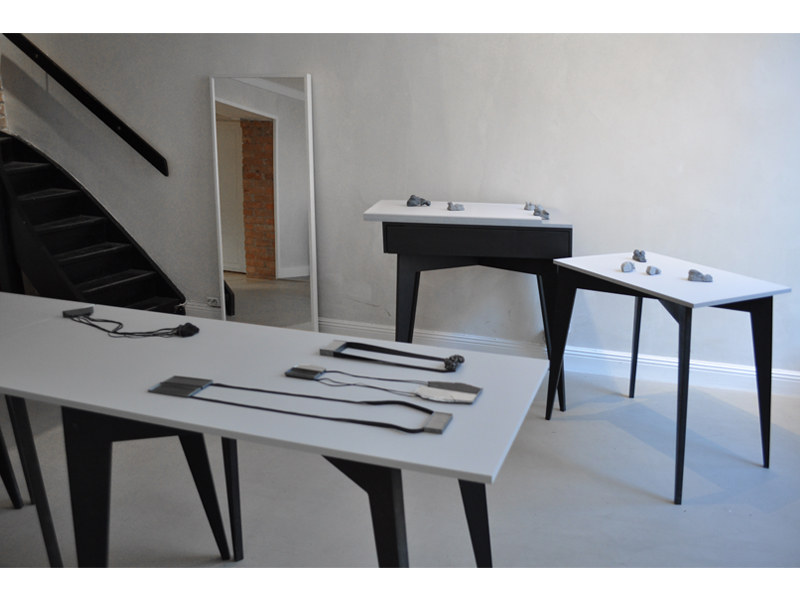
Seminar groups, tutorials, and participating in critiques of work are commonplace for students. Do you adopt a Socratic method here, or something else?
Lori Talcott: In regards to seminar, I select texts that inherently do this—engender a “Socratic methodology.” These texts offer different perspectives and counterpoints, and serve as a starting point for productive discussions. Intertextuality is an important framework in this sense, as the reading of two texts always produces a third, in-between text, and it is in this space where things get interesting. We also focus on texts that, in one way or another, present key concepts that relate to jewelry and its myriad functions, and how these, in turn, relate directly to the students’ work. We cannot rely solely on existing scholarly structures to understand our field, but we can respond to these structures and work across them. Since research and writing about jewelry is a nascent field, the idea of building the knowledge of our discipline together, not only in seminar, but in the widest sense of our field—including students, teachers, gallerists, collectors, and scholars—is crucial and, I might add, collaborative.
Tracy Steepy: In regards to critiques/reviews, we try not to keep a rigid format. We frequently shift the structure in response to where the students are in their academic studies. As a primary faculty I am usually in the role of facilitating and leading discussions, but we strive as a collective faculty to move the “power” or the dominant voices around the room. In our department we are also very fortunate to have eight to 10 faculty teaching at any given time. The generosity of this situation allows for constantly shifting and multiple vantage points. As faculty within this context, it demands that one individual cannot be too myopic or egocentric. Because of this, students learn rather quickly that they cannot engage with every voice in the room—they have to address and reflect upon the feedback that is most useful to them. Further, students need to occupy the space of the critique equally, from a place of empowerment. It is one of the ways they learn how to stand in their person and speak about their work from a position of knowledge and authorship.
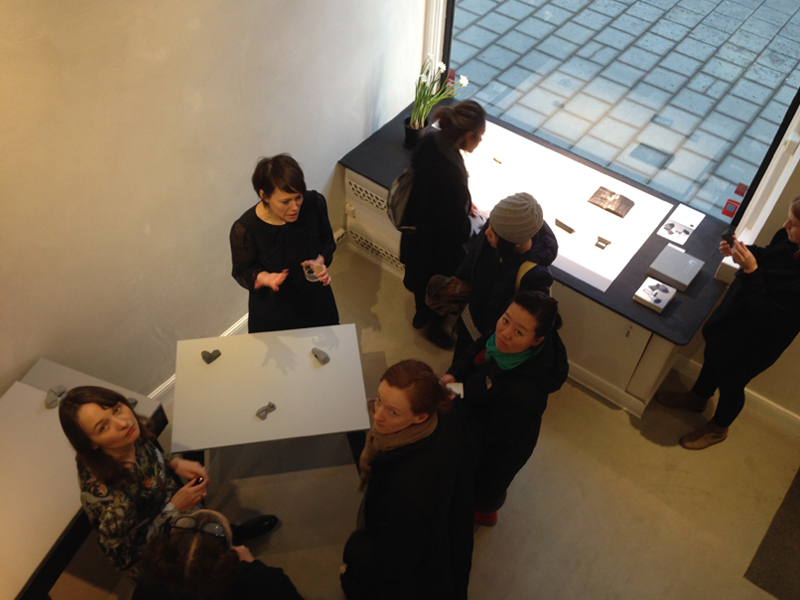
How do you manage the competing demands of making and teaching?
Tracy Steepy: With full-time teaching, it can be rather difficult, but I don’t find one to be in contradiction to the other. The development of my pedagogy is equally as important as the development of my creative practice. Teaching has afforded me incredible experiences of travel and meeting other artists, working with amazingly talented students and committed colleagues, a support structure for research and facilities—all of which have contributed greatly to my making. That being said, the academic needs and the responsibilities of running a program will never require less of you—one has to be good at establishing boundaries, discerning what one commits to, and being protective of one’s personal time.

Does the process of teaching affect your making processes, and if so, how?
Tracy Steepy: I find teaching in higher education to be highly generative, as so much inspiration and inventiveness comes from the dialogue with both students and colleagues. These conversations inherently come back to the bench, and if I cannot engage them directly in my studio, I pursue my ideas and creative interests in academic projects and curriculum development.
Lori Talcott: I agree with Tracy, and would add that the discussions I have with students, both at the bench and in seminar, inspire me to take risks in my own work, as I can’t ask them to do something I’m not doing myself.
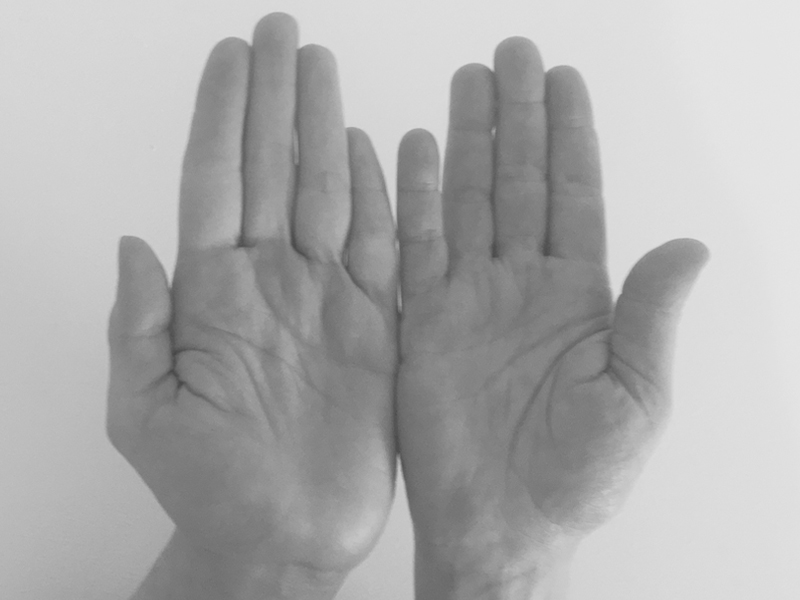
If you could change one thing about the way art jewelry is taught, what would it be?
Lori Talcott: I, like many of my colleagues, would like to see students get a stronger foundation in the history of jewelry—and not just from a traditional, Western point of view. Over the past 10 years of developing our seminar, we have focused on constructing a theoretical framework that includes both historical and cross-cultural perspectives, as we don’t think that the study of jewelry has been well-served by art history—or “craft theory,” for that matter. Jewelry is simultaneously highly idiosyncratic and broad, and because of this it needs an eclectic approach—one that draws from an array of disciplines, including anthropology and material culture, as well as art history. This approach, we feel, helps a student locate themselves and their practices in a broader field of inquiry.
Tracy Steepy: I would completely agree, and we both feel strongly that because jewelry is often marginalized among the arts, we have to approach our discipline from a position of strength—emphasizing the things jewelry does best, and not trying to make it something it isn’t and doesn’t do particularly well, or going through the back door of another field to legitimize it. I would also add that there needs to be a space cultivated for students to participate in what I would call “field research.” We often speak about “what the work is doing” or “how it might be engaging with the wearer or an audience.” But rarely do we build space in our process to actually wear the work ourselves or have an established feedback loop for how the work is experienced. I consider this to be a strange blind spot in our field, considering the life of the work is where its agency lies. In our program we strive to bridge this disconnect. I want my students to test drive the assumptions they have about their work. If the work does something other than what they planned or anticipated, this might not be a failure in the work or a flaw in their intentions, but actually serves as insightful and meaningful information that assists them in a greater understanding of their subject.
What books/catalogs do you find inspirational, and what are you reading right now?
Lori Talcott: I have an ongoing research project focusing on theories of magic and ritual. Fortunately, there is a great deal of recent scholarship on these topics. I am also reading Bruno Latour’s On the Modern Cult of the Factish Gods; Catherine van Eck’s Art, Agency and Living Presence; and some essays by Ananda Coomaraswamy.
Tracy Steepy: Always waiting and inspirational are anything by David Batchelor and Michael Taussig. Currrently, Taussig’s My Cocaine Museum.
Thank you.


